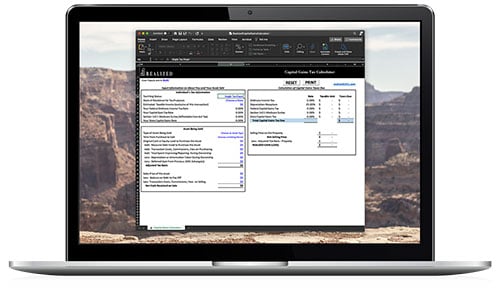The Realized Team’s Picks
How Can I Avoid Paying Capital Gains Tax on Gifted Property?

Transferring property to an individual and receiving nothing or less than the asset’s full market value in return may trigger the Internal Revenue Service’s gift tax. Capital gains taxes also may be a consideration if you divest gifted property rather than receiving it as an inheritance.
Can a Trustee Be a Beneficiary of an Irrevocable Trust?

Trusts can be helpful tools for estate planning and tax management. It’s important to know the difference between the types of trust if you intend to use them for these goals. For example, an irrevocable trust can’t be changed or terminated unless the beneficiary agrees to the modifications. That is a significant difference from a revocable trust.
What is Capital Gains Yield?

Investors can use a variety of methods to determine the profitability of their investments.
Which Investment Type Typically Carries the Least Risk?

The tradeoff between investment risk and reward (or potential return) is one that every investor needs to decide individually. That balance will likely change depending on the investor’s goals, circumstances, and age. But many investors seek a balance between risk and reward by hedging their portfolio allocation according to their risk appetite. For example, the traditional 60/40 portfolio consists of sixty percent equities and forty percent fixed-income instruments, like bonds. The stocks typically offer a more significant opportunity for growth but carry the risk of loss. In contrast, the bonds provide a smaller potential value increase and often less volatility. In theory, the stocks offer growth over the long term, while the fixed income holdings provide a hedge to help manage exposure to periodic value drops.
What Does It Mean to Be In a Zero Tax Bracket?

When you look at the tax brackets, they all have a rate greater than zero. You'll be taxed no matter your income, according to the tax brackets. But there is such a thing as the zero tax bracket. It just isn't listed. You have to do some calculations before you can determine if you're in it or not. Let's dive into what it means to be in a zero tax bracket.
What is a Balanced Portfolio for Retirement?

Financial planning is a key to preparing for your retirement years, especially the early years when you’ll be able to enjoy the new freedoms and social activities that come with stepping away from a full time work schedule.
Are Capital Gains Taxed Twice?

If you’ve ever owned – and then sold – an investment asset for profit, you likely paid taxes on those gains. At the federal level, those gains will either be taxed at your ordinary income rate (for short-term holds of less than one year) or at the capital gains rate (for long-term holds of more than one year).
How Can I Manage Inflation Risk?

Unless you’ve been stationed in Antarctica or the International Space Station these past 12 or so months, you’ve likely noticed huge increases in the cost of just about everything, from gasoline to groceries to goods and services.
What is the Difference Between Capital Gains and Investment Income?

Investments typically generate income in one of two ways: capital gains and investment income.
What is Private Equity Real Estate and How Does it Work?

Private equity covers many different areas but is common in real estate, business startups, and acquisitions. It is called private because investors in these deals focus on private companies and generally don’t get involved with public markets (i.e., the stock market). There are a lot of pieces to private equity, and we’ll go over them in this article, along with an explanation of how private equity in real estate works.


